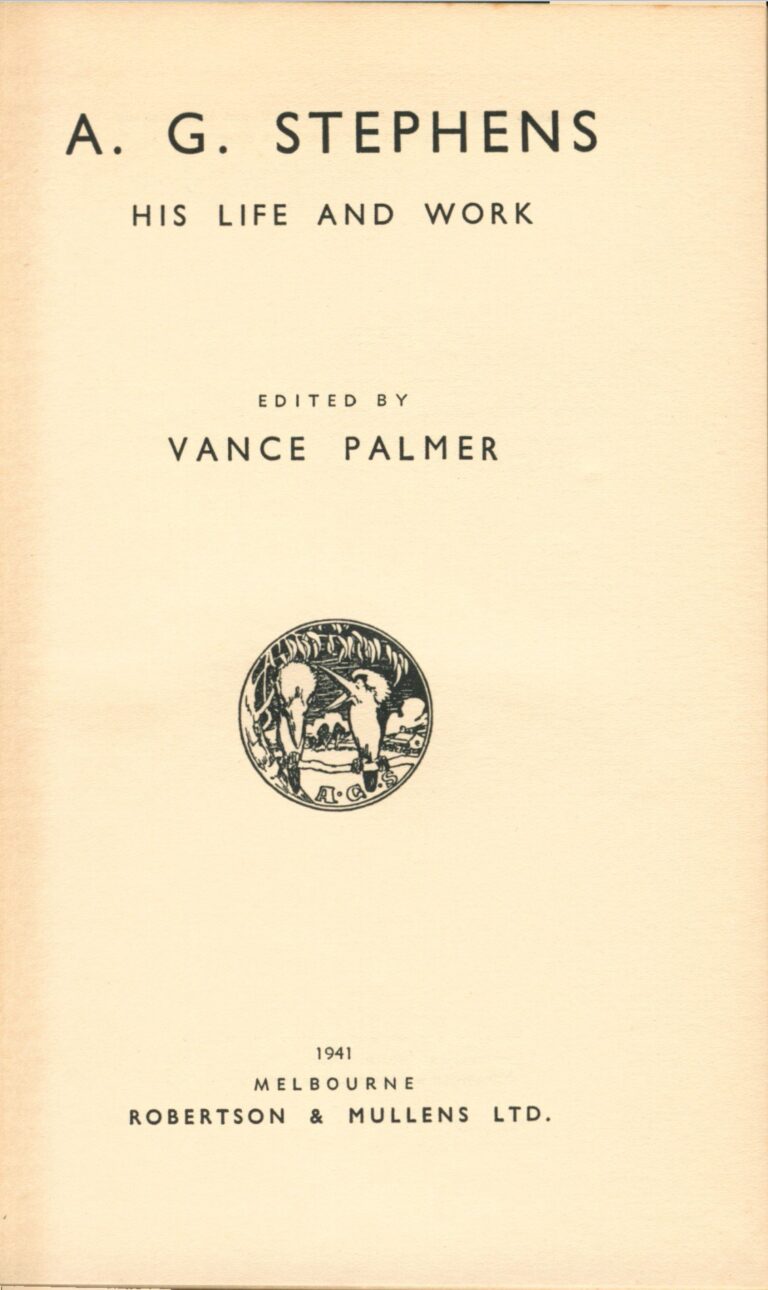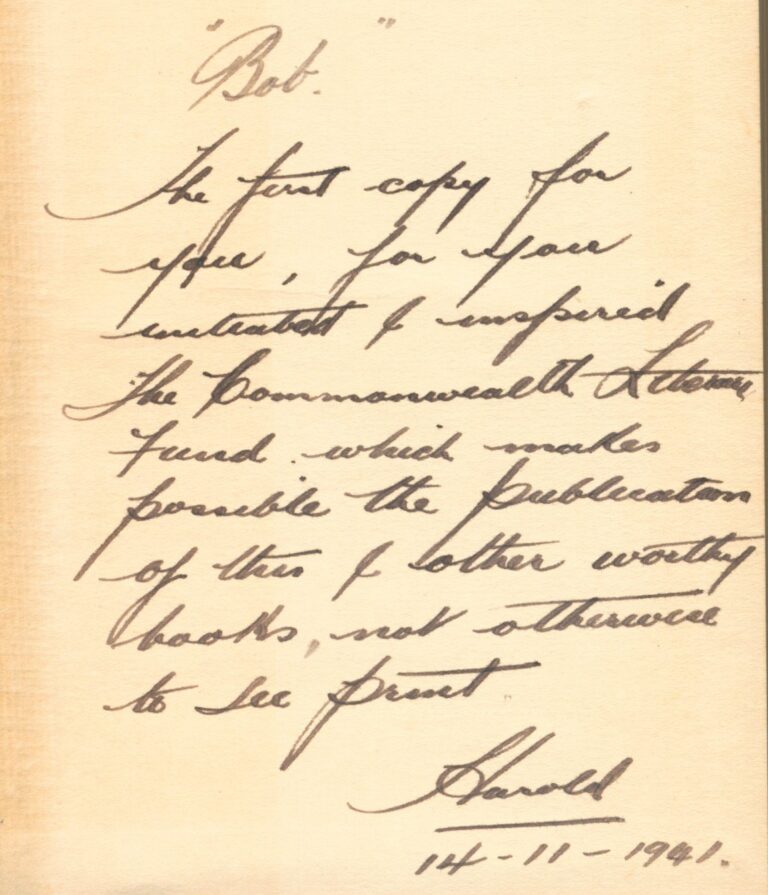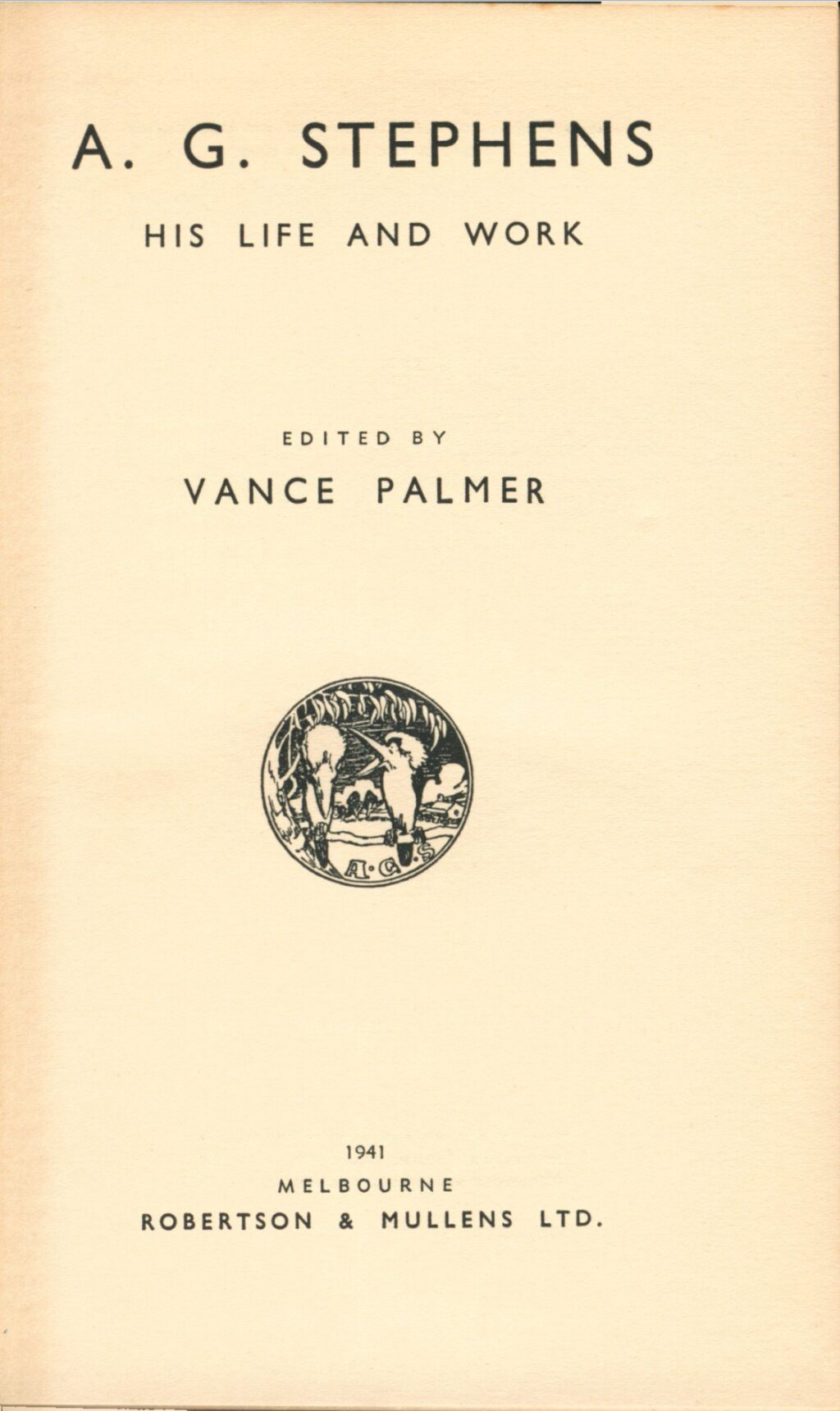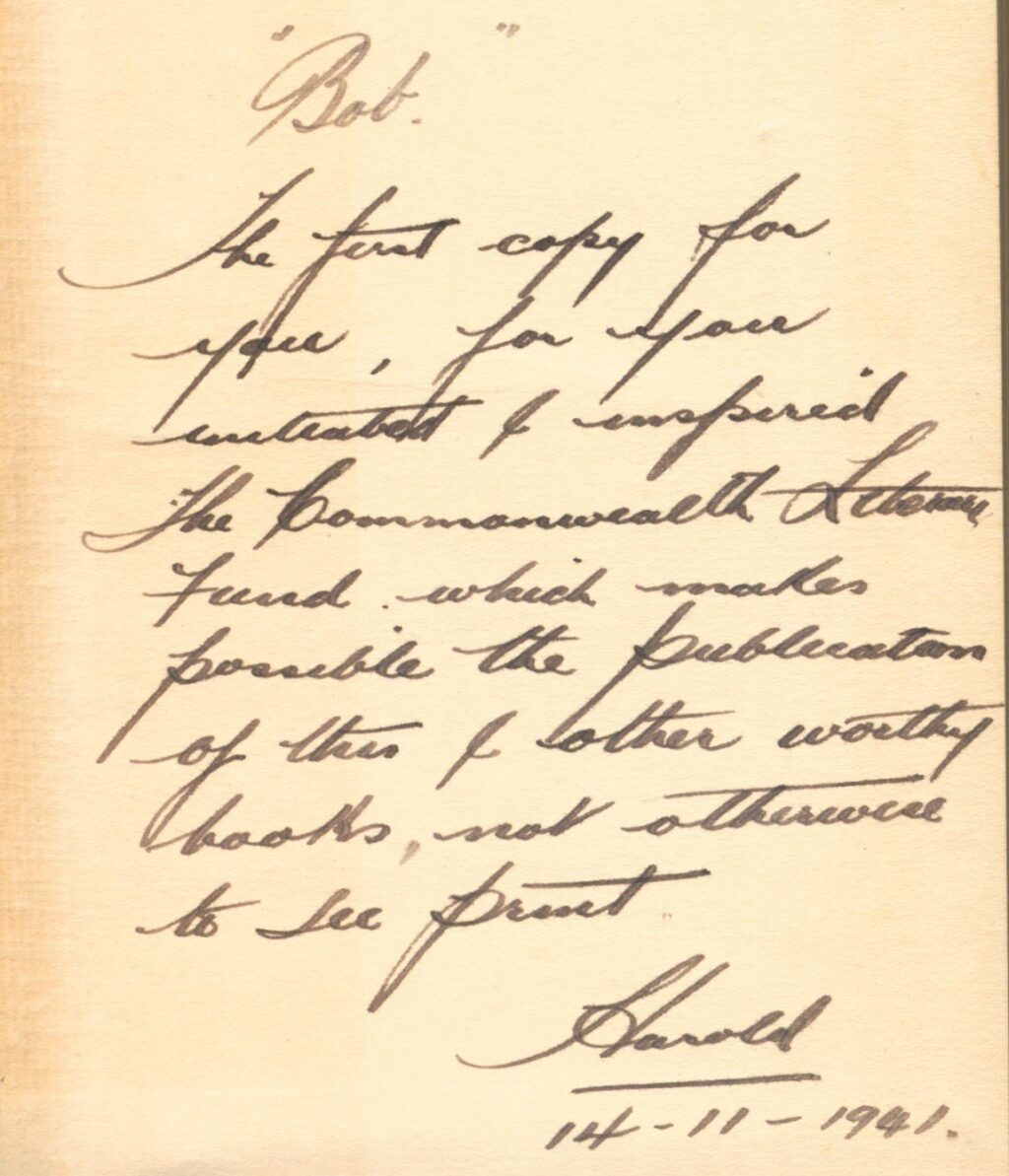Vance Palmer (ed.), A.G. Stephens: His Life and Work (1941)
Alfred George Stephens was an Australian writer and literary critic, most famous for his work in The Bulletin.
Born in Toowoomba in 1865 as the eldest of 13 children, Alfred’s father Samuel Stephens was a humble storekeeper who later found success as a businessman. That success led to Samuel becoming a part owner of the Darling Downs Gazette, and founder of the Toowoomba Grammar School, both of which provided important opportunities for his son. After graduating from the school, Alfred went to Sydney where he studied at the Technical College and was admitted to the New South Wales Typographical Association.
There followed stints for a variety of newspapers such as the Gympie Miner (1888-90), Cairns Argus (1891-92), and Brisbane Boomerang (1891), before Stephens was invited to join The Bulletin in 1894. According to his ADB entry:
‘Within two years he had transformed the inside front cover of the red-jacketed Bulletin from advertising space for books into the fully-fledged literary column with which his name is now linked. In the process the anonymous “A.G.S.”, described by Joseph Furphy as “the three-initialed terror”, became the country’s most influential, widely read and respected literary critic.
What readers could expect in the “Red Page” was a potpourri of articles, reviews, extracts, letters, paragraphs, anecdotes and notes, occasionally with photographs or cartoons. The poem of the week, starred to indicate its quality, appeared in a top corner and in the bottom corner might be blunt, cruelly witty advice to rejected contributors. Stephens’ common practice was to spark controversy by attacking an established writer, such as Burns, Thackeray, Kipling, or Tennyson, thereby enticing correspondents as varied as Chris Brennan or George Burns to attack and counter-attack, sometimes over weeks.’
Though Stephens left The Bulletin in 1906, he would continue to be a prodigious writer earning the admiration of his literary peers, many of whom would cite him as an influence. But when Stephens passed away in 1933 there was an ‘appalling lack of public response’ which indicated Australia had little interest in the arts.
This was something that Robert Menzies was determined to change. A Commonwealth Literary Fund had been established as early as 1908 to help assist struggling writers who found it difficult to make their art remuneratively viable, but it was for many years quite a modest scheme. Despite the pressing financial commitments of the looming war, when Menzies became Prime Minister in 1939, he decided to greatly increase the CLF’s funding, a testament to his passion for all things literature.
This funding would lead to a flourish of books, including an edited volume of Stephens’s writings, but not before Menzies was forced to resign as Prime Minister in late August 1941. At a time when Menzies’s experience with politics was a bitter one, it must have been gratifying to be reminded of what his efforts had achieved, which is what happened on 14 November when he was sent a copy of the Stephens compilation, that is inscribed:
‘”Bob”. The first copy for you, for your interest inspired the Commonwealth Literature Fund which makes possible the publication of this & other worthy books, not otherwise to see print.’
You might also like...
Sign up to our newsletter
Sign up for our monthly newsletter to hear the latest news and receive information about upcoming events.





